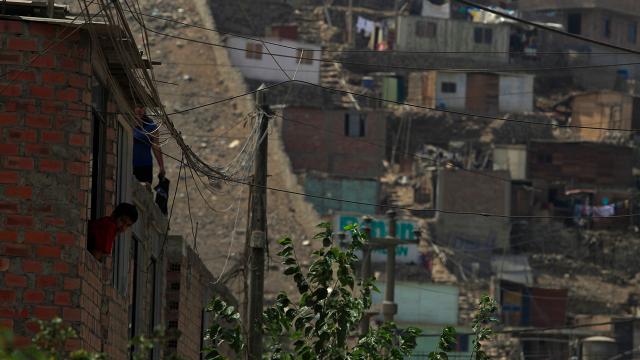Health/care services, by their very nature, need to adapt to different disciplines and specialties and work in harmony like an orchestra. However, this situation can be expressed as a holistic event that also includes risky activities.
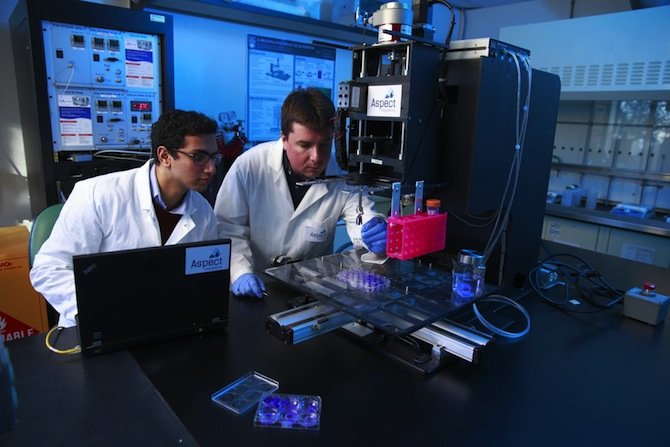
Health/care services is a complex and difficult field where innovations and changes are the most intense with numerous applications such as tele-medicine applications, business intelligence, digital hospital, data mining approaches, 3D technology and hologram technologies.
With the increasing use of 3D printers over time, it is predicted that prostheses, artificial organ trials, use for crochet training, innovations that make life easier for disabled individuals will provide solutions to both diseases and many problems.
In this article, we will talk about the innovations made on human health with 3D printers.
- The Rally that Paved the Way for Women’s Participation in Modern Life: Women’s Sunday
- It all started with a dance… They met in the middle of the war and reunited 70 years later
1. Rib BONE Produced with 3D Printer
A new solution in the treatment of orthopedic diseases with surgical procedure! Artificial rib bone was produced with a “3D printer”. The patient-specific bone was successfully implanted in the patient.
The innovative product produced by Professor Minchev and his colleagues in Cardiothoracic Surgery at Takuda Hospital in Sofia has saved a patient’s life and enabled him to live a comfortable life.
A patient living in Bulgaria was admitted to the hospital due to pain and swelling in his ribs; as a result of the examinations, a tumor was detected in the patient’s ribs. The physicians felt that the existing treatment was inadequate. They used 3D technology to produce a new rib for the patient so that he could breathe better and not have difficulty in many physical movements. The rib, which the doctors designed in cooperation with the “3DGence” company, was successfully transplanted to the patient after undergoing appropriate sterilization.
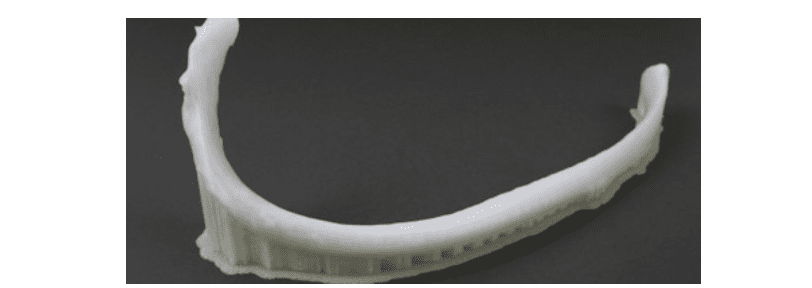
2. HEART Produced with 3D Printer
Scientists at Tel Aviv University have produced a three-dimensional heart the size of a cherry using 3D printing.
A three-dimensional heart made entirely of living cells and tissues was produced by combining cells and tissues known as “omentum”, which are found in both humans and pigs. The invention promises hope for heart diseases in the coming years.
Using the patient’s cells and biological characteristics, scientists have produced the world’s first three-dimensional human heart that can fully perform heart functions. The heart produced with a 3D printer carries the immunological, cellular, biochemical and anatomical characteristics of the person.
“At this stage, our 3D heart is small, the size of a rabbit’s heart,” Dvir said, adding that the heart cannot work as efficiently as a human heart because of its very small size.
According to experts, billions of cells are needed to make a heart that looks exactly like a human heart. But this is not possible at the moment. Despite these, the production of human hearts with 3D technology is being considered in the coming years.
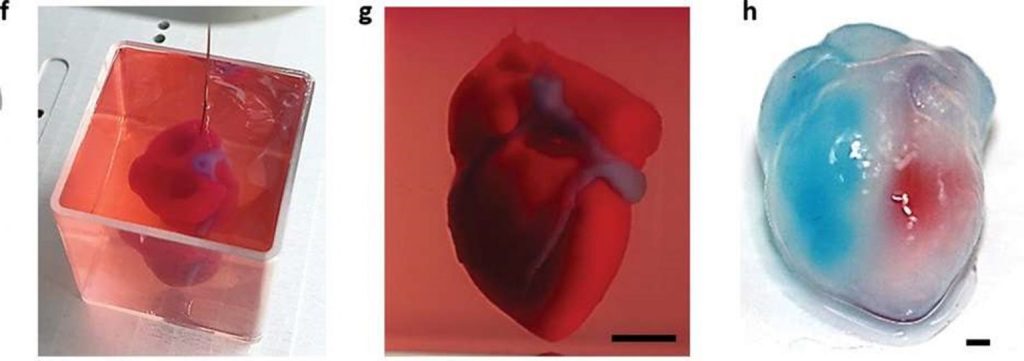
3. Human TISSUE (SKIN) and BONE Produced with 3D Printer for Astronauts
Scientists at the Dresden Technical University in Germany aim to use human tissue and bones developed from 3D printers to treat injuries and/or injuries of astronauts who work in space for long periods of time.
The ink used in the production of these tissues consists of algae-based material and human plasma.
Space research has accelerated with the developing technology. However, it has encouraged the European Space Agency to research against the difficulties of medical assistance on astronauts at long distances such as space.
In order to minimize the possibility of rejection of 3D-produced bones and tissues by the body, a structure produced from human plasma fluid, called “bio-ink”, was used. To ensure that these products, which will be used in the space environment, do not fly away due to low gravity, “algae”-based materials are mixed to increase resistance to fluidity. Like 3D printers, algae is intended to be produced by astronauts in the spaceship. With this, they will be able to produce the “bio-ink” themselves.

4. BIONONIC EYE Produced with 3D Printer
Scientists at the University of Minnesota in the US have succeeded in producing artificial eyes using sensors with 3D printing.
The “bionic eye” discovery, which promises hope to visually impaired patients, stimulates the nerves by converting light into electrical energy thanks to the sensors on it.
Scientists have produced an eye form using silver ink on a hemisphere from a 3D printer. Then, by adding light receptors called photoreceptors on this sphere, the ability to perceive light was added.
Micheal McAlpine, one of the researchers involved in the project, stated that the new bionic eye has achieved 25% success in perceiving light. McAlpine added that the project is very new, and it is aimed to be implanted with a prototype suitable for the human eye using softer tissue materials in the near future.

5. ‘Organ’ not ‘sugar’!
The 3D printer produced by University of Illinois researchers can produce biological tissues from sugar to be used in the body.
Other Related Content
This 3D printer, which arouses interest with its innovative form, can produce complex body tissues from a type of sugar called “isomalt” used in the production of throat lozenges. The process can also be referred to as “Freeform Printing”.
“This technology is a great way to produce soft materials, cell and tissue forms,” said Rohit Bhargava, Director of the Illinois Cancer Center. He stated. But with this innovation has come some challenges.
In the experience of previous attempts, problems such as burning or crystallization of sugar were encountered. To avoid such problems, researchers have tried solutions such as keeping it at a certain pressure and temperature. Researchers hope to produce all human organs with this printer in the coming years.
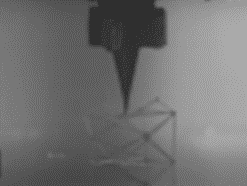
6. HUMAN CORNEAL Produced with 3D Printers
Scientists at Newcastle University have succeeded in 3D printing the human cornea with a new “bio-ink” technology.
The use of a combination of two chemicals, alginate and collagen, has been found to match the structure of the cornea. Corneas were then produced with 3D printers in less than 10 minutes. In order to understand the suitability of the produced corneas in terms of size, the human eye was scanned and the dimensions were equalized with the result.
In the results obtained, it was determined that the corneal cells produced remained 83% viable after 1 week. They stated that they wanted to test whether the live cornea produced fulfills the functions of all cells. If the results of the ongoing studies are positive, 3D printing will provide hope to more than 15 million cornea transplant patients.
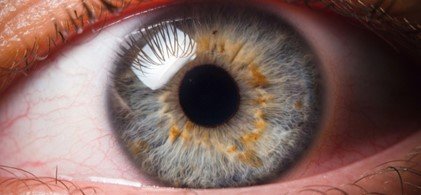
7. Specialized Implants for Broken Bones: Can Transform into Real Bone
Ceramic implants developed with the 3D printing method gradually disappear and become real bone after they are placed in the body through surgical operations.
Deep bone fractures are usually treated surgically with metal plates or screws. This process brings along negative processes such as intense pain, agitation, prolonged immobilization and prolonged transition to normal life.
The special ceramic implants produced by Hala Zreiqat and colleagues at the University of Sydney in Australia are made of calcium silicate, mineral gahnite, trace amounts of strontium and zinc, which are found in natural bones. In their experimental studies, they were first tested on rabbits, with successful results. Then, it was tested on 8 animals and sheep, which were included in the experiment respectively, and it was reported that all of them were equally successful; sheep started walking immediately after the implant was placed.
After 3 months of the operation, 25% of the fractures had complete healing, and at the end of 1 year, this value increased to 88% and successfully made its name in the medical world. In addition to success, these implants have also been shown to provide natural bone formation in areas where missing bone tissue is present.
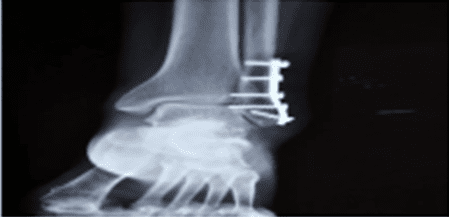
8. Project Made with 3D Printer in Turkey
Within the scope of the “3D Tissue and Organ Printing Project”, which will be a first in Turkey by Sabancı University Nanotechnology Application and Research Center, tissue structure was produced using living cells with a 3D bioprinter.
9. From Ultrasound to 3D Printer
Huggies 3D prints the baby’s face as seen on ultrasound, allowing the visually impaired mother to touch and feel her baby.
Tatiana, a visually impaired pregnant woman, longed for her baby because she couldn’t see him. Thinking about this, Huggies Brazil surprised her 15 minutes after the examination and 3D printed the ultrasound image of the baby and the product designed with the words “I am your son” in Braille on it, giving the visually impaired mother unforgettable emotions.
10. World Heritage Met with 3D Printer
The “Unseen Art” project for visually impaired individuals aims to remove barriers in art by recreating classical works with 3D printing.
Helsinki designer Marc Dillon tried to remove barriers in art by 3D printing works of art, including the Mona Lisa, for visually impaired individuals.
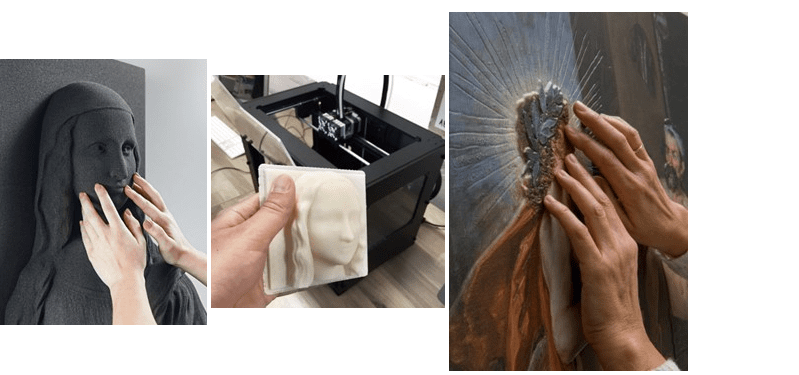
There are also some similar projects. The Spanish printing studio “Estudios Durero” used a technique called Didú. With this technique, artworks were produced in relief using 3D printing technology.




